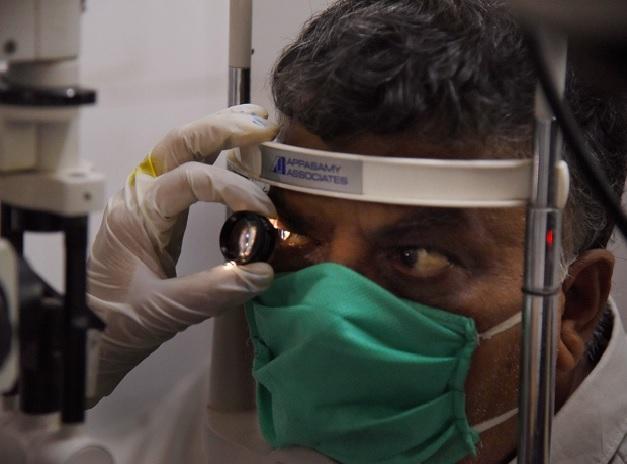COVID19: Secondary Infections Still a Big Challenge in India

Image Courtesy: PTI
Secondary infections pose a great threat during the treatment of any disease, sometimes these become more complicated than the disease itself. Recent instances of such secondary infections caused serious panic in India when mucormycosis cases amongst COVID-19 patients surged unprecedentedly. The fungal disease had to be declared an epidemic in many states of India with severely high mortality.
A study was conducted during September-December 2020 spanning 16 hospitals across the country, including AIIMS (All India Institute of Medical Sciences), Delhi and PGIMER (Post Graduate Institute of Medical Education and Research), Chandigarh. Led by Prof. Arunaloke Chakrabarti of PGIMER, the study was recently published in the journal, Emerging Infectious Diseases’.
The study concluded that there was over two-fold increase in mucormycosis during the study period compared with same period in previous year. Among the mucormycosis cases 65.2% were found to be associated with COVID-19. The study also concluded that COVID-related hypoxemia (low level of oxygen in blood) and improper use of steroids (for example, glucocorticoid) were independently associated with the COVID-related mucormycosis.
Chakrabarti spoke with NewsClick and explained the dangers and an emergency clinical situation for a patient who has been attacked by fungi belonging to the ‘mucor’ group that cause mucormycosis. He also explained the relation of mucor with other microbes, like bacteria and virus.
“Mucor fungi are so aggressive that they hardly give any time to other bacterial or virus to produce any infection. Generally, mucor does not precipitate any secondary bacterial infection. Mucors enter the blood vessels and cause necrosis, which is premature death of cells in living tissues. These fungi primarily target the lung, but through blood vessels they can also migrate to other vital organs—heart, brain and the kidney.”
He said: “The fungi produce big abscesses (accumulation of pus in tissues) in these vital organs, for example, in the heart these can cause abscess and similarly in the brain, too. Again, in the kidney, these can cause infarction (tissue death due to inadequate blood supply to an affected area) and stops kidney function. The abscesses don’t have bacterial infections. Mucors are not exactly associated with secondary bacterial infections”.
Chakrabarti also explained the reason for high mortality associated with mucormycosis. “The main concern in mucormycosis is that it has to be treated at the earliest, a delay of even a day or two can be very dangerous. Patients come to us late, and that is one of our primary concerns. You have to do the surgery fast to remove the necrotic material,” he said.
He also pointed out lack of experience in handling of the disease and scarcity of knowledge about this fungal infection in the country. “We have very less training in dealing with fungal infections, whether it is in the MBBS course or MD courses. In one of our surveys in nine countries across Asia, 60% of those treating the infection, don’t have any formal training in how to manage it,” he added.
Prof. Chakrabarti emphasised that the medical treatment should be done by the doctors who are trained for managing mucormycosis.
However, he noted that one good thing was that now doctors had started reducing the use of steroids, which could be one of the major reasons for mucormycosis cases going down.
Chakrabarti also suggested there should be a two days training to the microbiologists in standard laboratories across the country, in every state, to train them up for diagnosis. However, this might not be so easy, he added.
However, mucormycosis is not the only secondary infection that is posing a challenge to doctors in the treatment of the COVID-19 patients. Recently, there was another study of secondary infections among 17,534 patients hospitalised COVID in 10 hospitals across the country between June and August 2020.
The study found that 3.6% of these patients developed secondary bacterial or fungal infection. This may appear a small fraction, but the mortality among those who developed secondary infections is extremely high, about 56.7%.
The study also found the presence of gram-negative bacteria in 78% of the patients. Among these, Klebsiella pnuemoniae (the bacteria that causes pnuemonia) was found to be the predominant pathogen with a prevalence of 29%, followed by Acinetobacter baumanni with a prevalence of 21%. They also found antibiotic-resistant bacteria causing secondary infections in COVID patients.
NewsClick also spoke to Prof Satyajit Rath, eminent immunologist and adjunct faculty of IISER, Pune. On the possibility of secondary infections ,Rath said: “It is the case that, in many instances of lung inflammation, or pneumonias, of viral origin, many other microbial agents of lower virulence can find the space to grow in, for example, the inflammatory fluid that accumulates. There is some reason to think that this was true in the 1918 flu pandemic, and that many people died of such 'secondary' bacterial infection during that pandemic. Also, in the current pandemic, it is not only mucormycosis that is showing up as such a 'secondary' infection; other fungal infections, such as aspergillosis, are also being seen, as are bacterial secondary infections.”
“In fact, I think the reason that mucormycosis has become so much discussed is in part because it infects the sinuses and causes dramatic symptoms around the sinuses and eyes, quite separate from the persistent and/or worse lung inflammation symptoms that many other such secondary infections cause,” he added.
Rath also commented on the mismanagement of medication and its association with secondary infections. “It is quite true that inappropriately early usage of steroids, excessive doses of steroids, and/or too prolonged a use of steroids can all contribute, not only to mucormycosis, but to many other secondary infections,” he said.
Steroids are used in severely symptomatic COVID-19 patients because many symptoms are caused by an extremely strong immune inflammatory response. “However, immune inflammatory responses are also crucial for resisting infections. Therefore, suppressing them with steroids has an obvious cost, and steroid usage must therefore be done very carefully”, he cautioned.
On the use of antibiotics , Rath said: “While it is true that prolonged usage of broad-spectrum antibiotics can also lead to susceptibility to fungal infections, I doubt that such usage in COVID-19 treatment is prolonged enough to lead commonly on its own to secondary fungal infections.”
Get the latest reports & analysis with people's perspective on Protests, movements & deep analytical videos, discussions of the current affairs in your Telegram app. Subscribe to NewsClick's Telegram channel & get Real-Time updates on stories, as they get published on our website.















